en:localisation_et_commande_embarquee_d_un_drone_en_utilisant_la_vision_stereoscopique
Differences
This shows you the differences between two versions of the page.
| Next revision | Previous revision | ||
| en:localisation_et_commande_embarquee_d_un_drone_en_utilisant_la_vision_stereoscopique [2016/04/07 17:21] – created castillo | en:localisation_et_commande_embarquee_d_un_drone_en_utilisant_la_vision_stereoscopique [2016/04/07 17:34] (current) – castillo | ||
|---|---|---|---|
| Line 1: | Line 1: | ||
| - | === - José Ernesto GOMEZ BALDERAS (HDS) === | + | |
| - | PhD title: ** Localisation et commande embarquée d’un drone en utilisant la vision stéréoscopique | + | |
| - | Co-advisor: Rogelio LOZANO | + | ====== José Ernesto GOMEZ BALDERAS (HDS) ====== |
| - | Grant from Mexicain Government | + | |
| - | Date PhD finished: November, 2011 \\ | + | \\ |
| - | Current position: **MdC at GIPSA Lab* | + | \\ |
| + | |||
| + | **PhD title: | ||
| + | == Localisation et commande embarquée d’un drone en utilisant la vision stéréoscopique | ||
| + | |||
| + | |||
| + | \\ | ||
| + | |||
| + | Co-advisor: Rogelio LOZANO \\ | ||
| + | Grant from __Mexicain Government__ \\ | ||
| + | Location: Heudiasyc | ||
| + | Date PhD finished: | ||
| + | \\ | ||
| + | __Current position__: **MdC at GIPSA Lab since 2013**\\ | ||
| + | |||
| + | \\ | ||
| + | |||
| + | |||
| + | |||
| + | == Abstract == | ||
| + | |||
| + | Visual servoing is a control approach based on visual information. In this thesis, | ||
| + | visual servoing schemes are proposed to control a quadrotor and an octarotor applied | ||
| + | to positioning and navigation task. Concerning the quadrotor we use a hierarchical | ||
| + | control scheme whose inner-loop (fast dynamic) focuses on attitude dynamics, while | ||
| + | outer-loop (slow dynamics) deals with translational dynamics.\\ | ||
| + | |||
| + | Also, a nonlinear controller based on separated saturations for a quadrotor is | ||
| + | proposed to stabilize it attitude. The linear position and velocity of the rotorcraft are | ||
| + | obtained by using a vision-based algorithm via a monocular caméra. The dynamic | ||
| + | model of the quadrotor is presented using the Newton-Euler formalism. | ||
| + | In other vision system, two cameras are used to estimate the translational position | ||
| + | and velocity of the vehicle. Position was obtained using a frontal camera looking | ||
| + | at a target placed on a wall. Quadrotor velocity was estimated using a camera pointing | ||
| + | vertically downwards running an optical flow algorithm. Experimental tests | ||
| + | showed that the quadrotor performed well at hover flight using the proposed vision | ||
| + | based control system.\\ | ||
| + | |||
| + | – **Quadrotor vision-based**\\ | ||
| + | |||
| + | The same system was used to estimate the 3D position of the quadrotor over | ||
| + | a trajectory using vanishing points. The performance of the vision and control | ||
| + | algorithms has been tested in a real application by a quadrotor tracking a line | ||
| + | painted in a wall. Similarly the velocity estimation is obtained using an optic | ||
| + | flow algorithm. The estimated position and velocity information obtained | ||
| + | from the vision system is combined with the angular rates and displacements | ||
| + | of the inertial measurement unit to compute the control inputs. It has been | ||
| + | shown that the proposed control scheme achieves the tracking objective of | ||
| + | the visual reference.\\ | ||
| + | |||
| + | – **Octarotor vision-based** \\ | ||
| + | |||
| + | In this thesis, it is presented a visual feedback a control of an octarotor | ||
| + | using image-based visual servoing (IBVS) with stereo vision. Autonomous | ||
| + | control of an UAV requires a precise measurements and/or estimation of the | ||
| + | vehicle’s pose and also the knowledge of its surrounding environment. In | ||
| + | order to control the orientation and the position of flying robot with respect | ||
| + | to a target, we propose to use a navigation system based on binocular vision | ||
| + | system combined with inertial sensors. This combination of sensors, allows | ||
| + | us to get a complete characterization of the state of aerial vehicle. In other | ||
| + | words, using the stereo vision system we are able to estimate the UAV’s | ||
| + | 3D position, while from the inertial sensors we obtain the orientation of | ||
| + | rotorcraft. A semi-embedded navigation system combining stereo vision with | ||
| + | inertial information is proposed.\\ | ||
| + | |||
| + | The hierarchical control approach is appropriate to stabilize the 6DOF dynamics | ||
| + | of the quadrotor, it takes advantage of the time scale separation between rotational | ||
| + | (fast) and translational (slow) dynamics. For this reason, despite the lower frequency | ||
| + | rate of vision-based measurements is able to stabilize in real-time the quadrotor | ||
| + | translational dynamics. This combination of measurement strategies has many advantages | ||
| + | because one works very well at low speeds (vision system) and the other at | ||
| + | high speeds (inertial sensors). Both work at different sample rate. Taking advantage | ||
| + | of this property we have obtained a simplified dynamical model of the rotorcraft. | ||
| + | This model is given by six independent double integrators which have been stabilized | ||
| + | using proportional-derivative (PD) control. The real-time experiments have | ||
| + | shown an acceptable performance of the flying machine applying the control law | ||
| + | and sensing system proposed.\\ | ||
| + | |||
| + | An embedded control system for the mini rotorcraft is implemented. The control | ||
| + | is validated by experimental tests. Experimental results show that the implementation | ||
| + | of the control law on an embedded control system is satisfactory for autonomous | ||
| + | hovering in indoors and outdoors with light or no wind. Real time experiences are | ||
| + | developed to validate the performance of navigation systems proposed. This work | ||
| + | highlights the potential of the computer vision based position control strategies for | ||
| + | UAV. | ||
| + | |||
| + | \\ | ||
| + | \\ | ||
| + | \\ | ||




